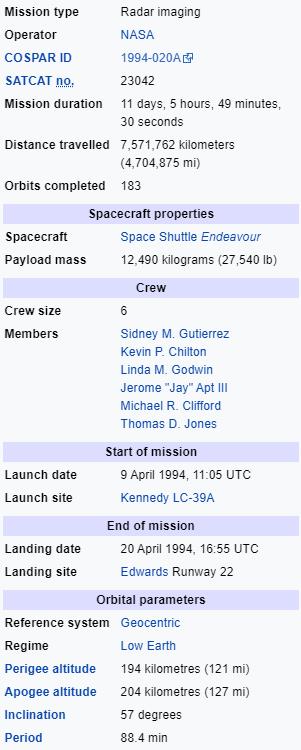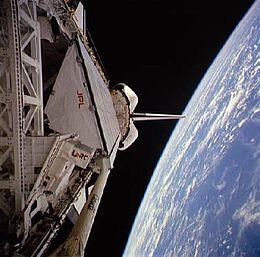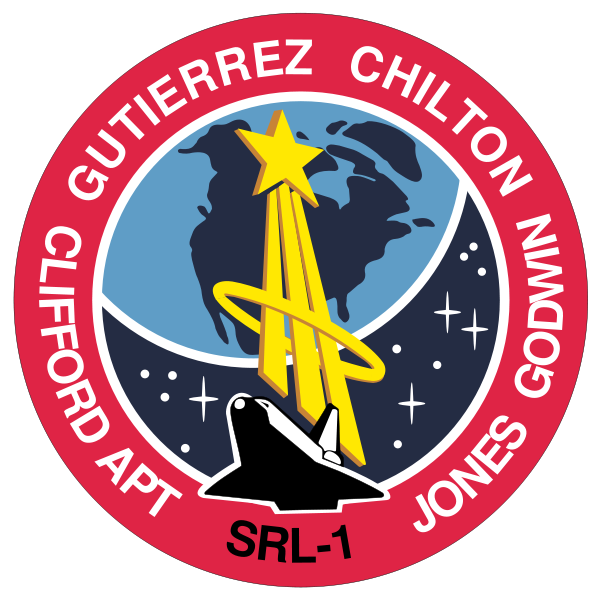Sidney M. Gutierrez
(Second Space Flight)
Kevin P. Chilton
(Third Space Flight) Mission Specialist 1:
Linda M. Godwin
(Second Space Flight) Mission Specialist 2:
Jay Apt
(Second Space Flight) Mission Specialist 3:
Michael R. Clifford
(First Space Flight) Mission Specialist 4:
Thomas D. Jones
(Second Space Flight)
STS-58 shuttleSTS-59 Shuttle mission was a Space Shuttle Programme mission that took place in 1994. The launch was chronicled by the 1994 Discovery Channel special about the Space Shuttle Program.
A free template by Lucknowwebs.com for WYSIWYG WebBuilder 8
Study
Research
Main Index
Space Cosmology
Science Research
*
About
Science Research
Science Theories
Desk
Site Map
BookShelf
Copyright © by Nigel G Wilcox · All Rights reserved · E-Mail: ngwilcox100@gmail.com
Designed by Nigel G Wilcox
Powered By AM3L1A
Pages within this section: USA Shuttle Mission Flights
STS-59
Pages within this section:
The Space Shuttle Missions
Astronauts:
STS-59
Command Pilot:
Pilot:
53
M
8
SM
Sub-Menu
menu
-
54
55
56
57
58
59
60

Endeavour began its sixth mission on the morning of 9 April 1994 with an on-time launch at 7:05 am Eastern time. Soon after, the six astronauts began activating the sensitive radar equipment in the payload bay that would be operated around the clock during the next ten days.
By 8 pm, the Space Radar Laboratory-1 experiments of NASA's Mission to Planet Earth were all activated and began their study of the earth's ecosystem.
STS-59 ground controllers finished activating the Spaceborne Imaging Radar-C (SIR-C) and began processing its first images of the Earth, while engineers working with the X-Band Synthetic Aperture Radar (X-SAR) worked their way through some initial activation problems.
Meanwhile, the Measurement of Air Pollution from Satellite (MAPS) instrument took data on the carbon monoxide content and distribution in the atmosphere since shortly after launch.
During the initial activation of the X-SAR, controllers reported they were unable to fully power up the amplifier that provides power to the radar.
The problem was in the low voltage circuit internal to the power amplifier. Engineers were not immediately able to explain the problem, so they turned off the power amplifier for about three hours. The problem was traced to an oversensitive protection circuit, a type of circuit breaker. The radar lab engineers bypassed the protection circuit and turned on the instrument at about 4:20 pm Saturday. It worked without incident, completing 100 percent of its scheduled observations overnight.
Thereafter, X-SAR controllers continued a deliberate, step-by-step check of the instrument, and successfully bounced X-band radar pulses off the Earth and recorded data. All of the instrument's circuits recorded normal readings. The crew also activated Space Tissue Loss investigations on the middeck, and the Getaway Special experiments in the cargo bay.
As of Sunday morning, 10 April 1994, the radar laboratory had taken data readings on more than 40 targets including Howland, Maine; Macquarie Island; the Black Sea; Matera, Italy; and the Strait of Gibraltar. Scientists also gathered information on three of 19 "supersites," the highest priority targets for that day. Sunday's supersite observations were global carbon and hydrologic cycles in Duke Forest, North Carolina; hydrologic cycles around Otzal, Austria; and geological data on Lake Chad in the Sahara. Observation sites for Sunday afternoon included Gippsland, Australia; Sable Island; Toronto, Ontario, Canada; Bermuda; Bighorn Basin, Wyoming; Chung Li, China; and Mammoth Mountain, California. The supersite opportunities were Raco, Michigan and the Gulf Stream.
Sunday evening's supersite observations by SIR-C and X-SAR focused on the interaction of plants and animals in the ecology of the forests of Raco, Michigan; hydrologic cycles around Bebedouro, Brazil; tectonic plate activity around the Galapagos Islands in the South Pacific; and the transfer of heat through wave energy in the Southern Ocean.
The Measurement of Atmospheric Pollution from Satellite instrument also continued to take readings of the concentration and distribution of carbon monoxide throughout the troposphere. Crew members reported good earth observation photography opportunities over the Northeast Pacific Ocean and the frozen lakes of the Raco supersite area, as well as fires in the Sierra Madre mountains of Mexico.
On flight day two, the Red Team crew of Commander Gutierrez, Pilot Chilton and Linda M. Godwin began its sleep shift about 5 pm Central time, to awaken at 2 am The Blue Team crew members, Jay Apt, Michael R. Clifford and Thomas D. Jones, awakened about 4 pm to begin their third flight day on orbit, and would go to bed about 5 am
9 more days consisted of experimental and observational processes before returning to Earth on 20th April 1994 completing an 11-day successful mission.

Space Shuttle Endeavour in orbit with SIR-C in its payload bay















